|
James DeAndressi B.S, NASM-CPT has been interning at SportPerformanceU this summer and will be today’s guest blogger. James earned his bachelor’s degree in exercise science from Southern Connecticut State University and is planning on attending school this fall to become a physical therapist assistant. Below you will find his piece on why including a proper warm is so important. It is clear based on research, observation, and comparison that a good warm up before a workout can increase the overall quality of how you spend your time in the gym. The question is however, what makes up a good warm up and why is the warm up part of the workout important? All trainers may have different opinions and different ways of training but for the most part, it is fair to say that most qualified trainers in any setting should agree with the warm up being a key part to an individual’s daily routine. At SPU we will typically start a client with soft tissue work as well as some specific dynamic warm up exercises. Soft tissue work for a client will be mainly foam rolling or simple active massage unless the trainer is certified and/or licensed as a professional health care provider. They need to be legally bound to doing some type of manual soft tissue work on a client. Foam rolling is safe, effective, and backed by research to roll out fascia to fix cross linked muscle fibers. This will in turn make the muscles fire and perform the best it can for that specific person at that specific time. Foam Rolling Techniques A good warm up needs to consist of anything we as trainers believe will have a positive impact on our client during the workout. Mobility, or in other words, the ability to move freely through a given range of motion is one component to a good warm up. Exercises to increase range of motion include ankle dorsiflexion at a wall or shoulder wall slides. Corrective exercises are another key component. These exercises will be put on a client’s program depending on the results of some type of movement analysis. Corrective exercise is a broad topic but in the simplest of terms, they are specific exercises that will be targeting some type of human movement deficiency. Examples of some corrective exercises would be Unilateral or Bilateral Internal/External Rotation of the shoulder joint or hip joint and bird dogs to increase core stability as well as to strengthen a specific deep muscle connected to the spine which can cause pain. Trainers should take note of any types of movement deficiencies during every training session in order to progress or add/subtract corrective exercises. In other words, analyzing movement should not be an afterthought but should be constantly on a trainer's mind during sessions. To learn more about SPU’s specific biomechanical analysis, read our blog which gives some detail on this topic. Dynamic exercises are another way we can prepare a client’s body for the upcoming workout. At SPU this is the final part of the warm up before going into our power, strength, speed, and conditioning blocks. According to Eric Cressey, in his book Maximum Strength “we are focusing on raising body temperature which in turn will raise muscles temperature. Lubricating muscles and joints as well as increasing mobility in key joints while enhancing stability in others in order to perform strength movements more efficiently” is also part of the equation. Some examples of dynamic exercises would be leg raises or a lateral shuffle. Trainers who understand the importance of a well-balanced exercise program will have a warm up section that is not overlooked, rushed, or inefficient. For a client’s own personal well being, I would recommend changing trainers if they did not properly warm up a client before a workout. Fitness professionals should all look at the warm up as a line of defense, if you will, for decreasing injury. As fitness professional including a solid warm up is a necessity.
0 Comments
Many times when you walk into most training facilities, a large percentage of women will be found in yoga classes and men will be near the free weights. Women love holding those poses and men want to lift more weight. What if things were flipped one day? The women were using the free weights and the men were taking yoga classes. Did we just enter the twilight zone? Would this hamper any of the gains the men would see in the weight room? Would the women become bulky and lose all mobility? The answer to both questions is a resounding no. Both would actually move better and feel stronger.
Unfortunately we know something like this is unlikely to happen. Most people like doing what they are good at, not necessarily what they need. Overall, if we look at the sexes as a whole, women will have greater mobility than men and vice versa as far as strength goes. This is the case in most part due to our different hormonal profile. Men and women have different hormonal levels that contribute to certain fitness attributes. So the question remains, how do you get people to work on their weaknesses? Does the twenty six year old female that can put her foot behind her head need more mobility? No, I don’t think she does. She would get a much greater benefit from spending her time near the free weights. And don’t get me wrong, yoga works on many other things than just mobility, but for the sake of the argument we are going to look at yoga as something that improves mobility. How about the eighteen year old male that is squatting in the corner? It seems that his hips and shoulders could use a bit more mobility. Do you think he might benefit from some mobility work, perhaps a yoga class? Yes, that would help a lot! Many male squatters that do not take the time to work on their mobility have poor squatting form which will lead to a possible injury and less efficient movement. With less efficient movement usually comes less weight being lifted. Those are both bad things. The problem is that we like being good at things. It is human nature to gravitate towards things that we do well and make us feel good. No one likes to struggle. As athletes and those still trying to maintain their athleticism we “forget” to include the things that are going to make us better, no matter how bad we might be at them. If you are lacking mobility work on it, it doesn't necessarily have to be a yoga class , but it has to get done. If strength is a issue, go lift something heavy. The point being, if you do not work on your weaknesses, you will never be as great as you would have been had you done so. Challenge yourself to put your ego to the side and work on your weaknesses to become a better athlete. It will pay off in the long run! There are exercises that are considered bad. Some because they can cause injury, others because they are just plain ridiculous. I’m sure you have seen some on YouTube that make you cringe! But there are also a lot of exercises that fall into a “gray” area. The gray area is more dependent on the specific individual performing the exercise. One exercise that is bad for one person might be great for another and vice versa. This is where exercises can get a bad rep. let’s review some common examples.
Most overhead pressing is considered a huge no no within the general population, and for good reason. Pressing a barbell from the front of your shoulders to an overhead position is usually contraindicative for much of the general population, which means from the back of the shoulders would be even worse. A competitive weightlifter that performs exercises such and the clean & jerk and snatch will on the other hand most definitely have to be able to overhead press to compete at their sport. Athletes that have developed the ability to do this exercise safety will use overhead pressing as a staple of their training program. There are two very different people, a desk jockey and a professional weightlifter. They probably will not and should not be performing the same exercises. It is much more important that the exercise is appropriate for the specific individual than just calling it a bad exercise. Again, there is a gray area for many exercises. The back squat is the king of exercises. Just ask anyone that trains high school football players. The back squat is without a doubt one of the best exercises to develop strength and athleticism. This does not mean it is appropriate for everyone. There are more people who have no right back squatting than the other way around and that includes high school football players. Can the individual perform a bodyweight squat with their thighs pass parallel? If not, then the person should not be performing a back squat. There are many things that an athlete can work on so they can perform the back squat, but those things have to come first. To find the true reason why someone cannot perform a back squat a battery of tests would have to be performed to assess the reason for the limitation. Once that is done and the individual performs the necessary steps then back squatting can be added to the training program. A simple rule when deciding if someone is capable of performing an exercise is to have them execute it with just their bodyweight. If they pass, feel free to add that exercise, if they don’t, find a way to fix it. There are also times when unfortunately you probably should not perform a certain exercise ever again. If you are a desk jockey and herniated a few disks, deadlifting might be out for some time, if not for good. I for one always look for variations of an exercise to see if it would work. With this example single leg deadlifts might be able to be added back in eventually. And if I had to choose between no deadlifting and the single leg variation I am taking the later every time. What it really comes down to is if an exercise is appropriate for the certain individual, not if the exercise is good or bad necessarily. An exercise can only be bad if one is not capable of performing with proper form. Let’s start by answering the question, what is the bilateral deficit? The bilateral deficit is the thought that one can produce more force, and power for that matter, on one leg rather than two, when both of the single leg totals are combined. So if that is the case everyone should drop bilateral movements and go with its unilateral counterpart, right? Before we make that leap let’s review the pros and cons of both.
Although you can discuss the bilateral deficit for both the upper and lower body I will be sticking with the lower body and using the squat for comparison. This is the most heavily debated area of the bilateral deficit so I see no reason to stray from the topic. The bilateral deficit is now an additional part of an argument that has been being made for using unilateral squat variations long before it was even a hotly debated topic in the strength and conditioning world. Below is my review of both squat variations. Bilateral Squat -There is a greater amount of force produced during the movement with both legs pushing equally. Along with a greater amount of force being produced a greater anabolic hormonal response will take place. -Having both legs working at the same time does not limit one’s ability to produce an equal amount of force on the second leg as with the unilateral squat variation. Unilateral Squat -The unilateral squat, and for this discussion, the rear foot elevated split squat (RFESS) is the movement of choice when selecting an exercise from this category. The RFESS avoids the pelvis from going into a posterior tilt. This means your hips do not disappear underneath you. This will protect the vertebrae of the lumbar spine from any flexion taking place. This is my #1 reason for choosing this movement over the bilateral squat if I am only going to choose one version. - The words “sport specific” gets tossed around like political correctness nowadays, but nonetheless it is worth bringing up. Is a unilateral squat more sport specific than a bilateral squat? That is certainly a possibly, although I think the term is grossly overused and should only be used when mastery of the basics takes place for any athlete. With that being said a split squat is one of the basics that an athlete should master. So is it more sport specific or not? I think if you polled 100 strength and conditioning coaches it would favor saying it is sport specific, maybe 70/30. -Athletes, especially younger athletes and if we want to get even more specific, younger, male athletes struggle immensely with the bilateral squat. I am not referring to loading weight on the barbell, but a body weight squat. The athlete lacks the mobility and stability to perform a body weight squat in most cases. This is likely due to a number of factors, but a huge one being that puberty is taking place and growth is making things “tight”. At this time the split squat is a much better option. So at the end of the day it is not necessarily the bilateral deficit that is going to make me choose a bilateral or unilateral squat pattern, but the athlete’s ability to do either movement. I personally include both variations for my athletes based on what I have previously mentioned. What squat variations are you having your athletes perform? How many athletes are required to perform a movement analysis before starting a performance training program? My guess is that most athletes are not. Let me ask another question. What happens when an athlete is asked to perform a back squat or any movement for that matter, which is dysfunctional in nature due to their physical limitations? Strength is added to that dysfunctional movement pattern, it is not added to the true functional movement pattern. I’m going to continue to use the squat as my main example because it is probably the most common exercise used in most high schools. The squat is an amazing exercise for building strength, but when it is performed before athletes are ready for the movement bad things can happen. Below are some pictures that illustrate what an improper squat pattern looks like. These faulty squat patterns could be due to an array of reasons, some of which include short/weak hip flexors, imbalance of core musculature, excessive pelvic tilt, limitations with ankle mobility, weak glutes, etc. A complete movement analysis must be done to understand the complexity of these dysfunctional squat patterns. All of the above pictures demonstrate a faulty squat pattern that needs some cleaning up. Below is a picture of a squat pattern that is ready to be loaded with external resistance. If you are not performing a movement analysis of some sorts you are doing a disservice to your athletes. It is literally the foundation of any worthwhile performance training program.
A great performance training program will reduce the chance that you sustain an injury, but sooner or later, if you have not already, chances are pretty good that you will be injured. It is one of the most defeating experiences an athlete will deal with during their career. If you have ever had an injury that has kept you sidelined for an extended period of time you know how it feels. All your focus is on returning to the game as soon as possible. Let’s ask two very important questions to the sport medicine staff to see what approach should be taken with the injury. The first question would probably be how long am I out for and then a close second should be what can I do to get better while I’m injured? Is there a way to design a performance training program around an injury? The answer unfortunately is it depends on the injury, but for most injuries an experienced performance coach will be able to put together an appropriate program that keeps you strong and motivated! Trying to keep your training program on track will pay huge dividends when your injury has healed and it is time to return to play. Let’s go over an example where our athlete has a right lower leg injury. Let’s assume this athlete will probably be sidelined for a few weeks. Here is a look at a program that might be appropriate for this athlete. Single Leg Overhead Medicine Ball Slam 3x8
Three Point Prone Plank 3x60s. Single Leg Deadlift 3x5 Alternating DB Press 3x6 Single Leg Band Push-Pull 3x10 Single Leg Squat 3x5 Chin Up 3x8 ½ Kneeling Lift 3x10 Again this is just a hypothetical example; much thought has to go into writing performance programs, especially for an injured athlete. This program allows the athlete to work on power and strength, while staying off that injured foot. Yes every exercise is performed only on the healthy foot and yes if you did asymmetrical training forever it would be bad. For a short term training program this would not negatively affect you. It would have a tremendously positive effect and get you back into “game shape” sooner. Each training program should be individually programmed so these exercise movements have to be appropriate and beneficial to this athlete. Each injury is a setback, some longer and some shorter than others. It is how we deal with those injuries that will decide how well we play once it is time to return to the game. The ability to train and stay in the right mind set will set us up for success in the future. Do not let an injury stop you from accomplishing your goals. Continue to train using appropriate modifications, attend practices and be a supportive teammate at games. There are three components to a well rounded warm up that every athlete should be doing. They include self myofasical release, prehab & activation work and movement prep. These components prepare the athlete to have a more efficient and productive training session.
Self myofasical release takes place in the first five minutes of the training session where the athlete uses a foam roller to work on improving their tissue quality. A number of rolls can be performed over each area of the body; usually eight to ten will suffice. This is the time to break up adhesions or knots in the tissue and transport nutrients to the area for repair and growth. This also prepares the muscles for the next step in the warm up. Prehab & activation work is what we like to call our developmental part of the warm up. It is when the athlete is developing their mobility and stability. Each athlete has their own unique set of strengths and weaknesses; this is the time to work on those weaknesses. The limitations that are holding an athlete back need to be addressed and turned into their strengths. Hip mobility and core stability are two areas of our developmental process that are usually addressed most frequently. These are areas that athletes tend to have the most difficulty mastering, but are extremely important to their success. Proper hip mobility enables the athlete to be in a stance that is most suitable to playing sport and having stability throughout the core gives the athlete the ability to transfer force through their lower body to their upper extremities. The final part of the warm up is the movement prep section which focuses on preparing the athlete to perform the exercises that are part of their training program for that training session. This involves going through body weight movements that are performed dynamically. This includes squatting, lunging, pushing, pulling, skipping and bounding. The athlete is now primed to execute the training session to the best of their ability. A proper warm up takes about 20-25 minutes to complete and is a key to reducing injuries, moving efficiently and having a great training session. Takes the time to prepare your athletes for the training session ahead with a proper warm up and you will see your athletes moving and feeling better, and yeah, they will be stronger and faster too! The power clean is one of the best ways to add an amazing amount of strength and power. It requires both an incredible amount of mobility and stability to move through such an explosive exercise. It will improve most all measurable athletic performance parameters on the field and in the training facility. Assuming that the athlete has the proper fundamental movement skills required to perform the power clean the proper set up and coaching cues should be the first thing to get attention. Power Clean Set Up Positions w/ Coaching Cues * Hang Position- standing position, elbows locked, and medium hook grip Rack Position- get the bar on shoulders from hang position- elbows up, humerus parallel to floor- weight supported by shoulder NOT hands- drop the bar and catch it in the hang position Jump Position- bar is at mid thigh- hips and knees are unlocked- bar is touching skin/clothing Squat Jump Position- jump w elbows locked and land in squat position Jump w/ Catch- jump and catch the bar on shoulders- elbows straight to slammed forward- aim your shoulders at the bar- slam bar onto shoulders Front Squat –bar is on the shoulders-squat to slightly pass parallel while keeping the elbows up, humerus parallel to floor Power Clean Progressions & Variations
Power Clean (Mid Thigh, Above Knee, Mid Shin, Floor) Power Clean & Front Squat (Mid Thigh, Above Knee, Mid Shin, Floor) Squat & Clean (Mid Thigh, Above Knee, Mid Shin, Floor) This is by far one of the best exercises for athletes to develop a huge amount strength and power that will transfer from the training facility to the field. Problems arise when the power clean is introduced without the proper progressions and is therefore rushed. Before a power clean is attempted athletes should possess the proper mobility and stability to perform the movement. Rushing the process or simply skipping over it to get to a poorly executed product is not the way to go about such a complex exercise. When taught and progressed properly this is a great exercise to add to your training program. * power clean set up positions w/ coaching cues from “Starting Strength Basic Barbell Training” 3rd Edition, Mark Rippetoe The biomechanical analysis is performed before even thinking about what sport performance program will be written for an athlete. It is literally the first step in figuring out what an athlete needs in their program. It is not a measurement of how strong or powerful they are. The analysis takes into consideration the mobility, stability and neuromuscular patterning of the athlete. We are looking at how well they perform basic movement patterns. The joint by joint approach which is taken by many of the top professionals in the field approaches the body as alternating mobile and stable joints. An example of this would be how the ankle is a mobile joint and the next joint up the kinetic chain; the knee is a stable joint. There has to be a balance of mobility and stability while performing movement to be efficient.
At SportPerformanceU we perform ten different tests during our biomechanical analysis. Each test encompasses the ability to be both stable and mobile as is the case with any athletic or functional movement that is being performed. The overhead deep squat is one of our ten tests that look at multiple things during one movement. We are examining the ability of the ankles, hips and thoracic spine to be mobile while the knees, lumbar spine, and shoulders are stable. This test also looks at the neuromuscular patterning of the body. This is the motor learning process, where the muscles learn to “fire” properly and efficiently. An example of this would be examining an athlete that has the ability to perform an overhead deep squat in the supine position, but when standing is not able to accomplish the same task. The stability and neuromuscular firing patterns needs to be cleaned up. This is just one of the ten tests we do to get a full picture of what each athlete needs. Everyone is an individual and desires a training program that is specific to them. It is so important to perform this biomechanical analysis to have a starting point for each athlete. If an analysis is not done it becomes a guessing game. And I do not want the training programs I write for my athletes to involve any guess work. Every athlete wants to throw the ball farther and faster than they did the day before. Baseball pitchers want to see the radar gun go up and quarterbacks want the yardage of their passes to climb. It is a goal of all baseball pitchers and quarterbacks out there. The problem is that getting a “stronger arm” as most of them think is the solution is neither going to help the athlete throw the ball farther or faster. Let me explain, as I am sure most of you find that statement slightly confusing. Throwing athletes need both the right amount of stability and mobility at certain joints to complete the task of throwing. They also need a stable core that is able to transfer a great amount of force that has been developed from a sufficient amount of strength and power training modalities. Those attributes will give throwing athletes this “stronger arm” we are referring to.
When developing throwing mechanics the whole body must be considered. Two key attributes that I want to focus in on are the ability of the shoulders to be stable and the thoracic spine and hip region to be mobile. If both of these areas have the right amount of mobility and stability then the core will have the ability to transfer a greater amount of force from the ground through the release point. We also need the ability to disassociate our hips from our shoulders. It is with this rotation that we are able to create greater amounts of power. All of this is for naught though if we do not develop the strength and power necessary to increase our velocity. The performance training program is extremely important when trying to add speed and distance to your throws. Lower body double and single leg exercises that encompass both strength and power have to be a staple of this training program. Focus on adding the proper amounts of mobility and stability along with increases in strength and power to get that “stronger arm” you are searching for. The results will speak for themselves. |
Archives
July 2024
Categories
All
|
Proudly powered by Weebly


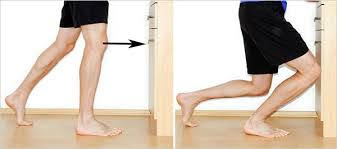
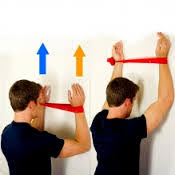
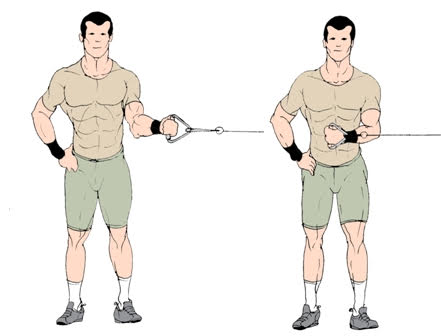

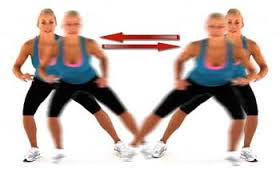
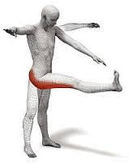
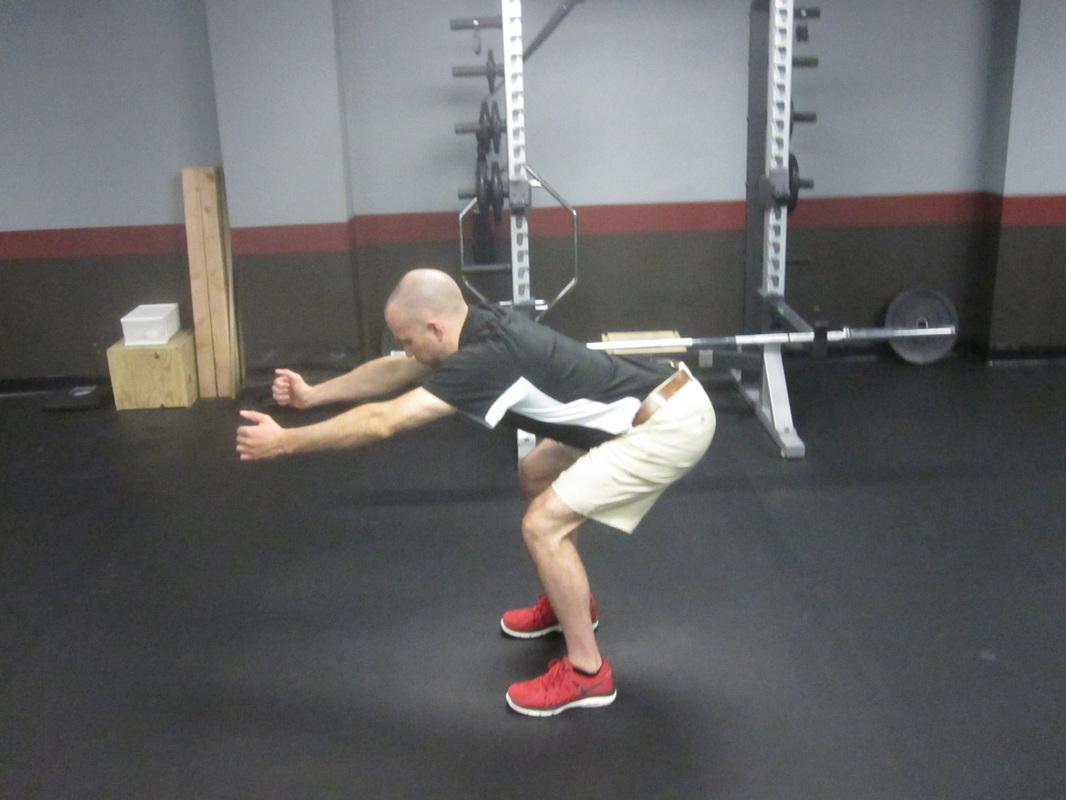
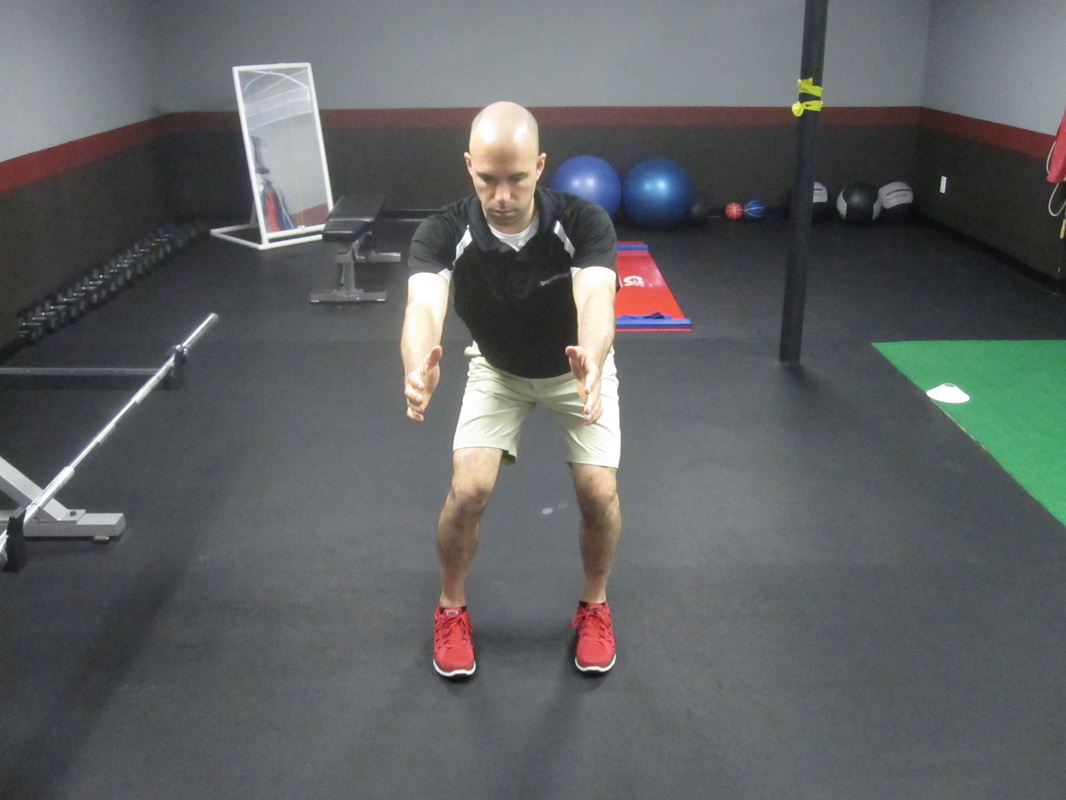



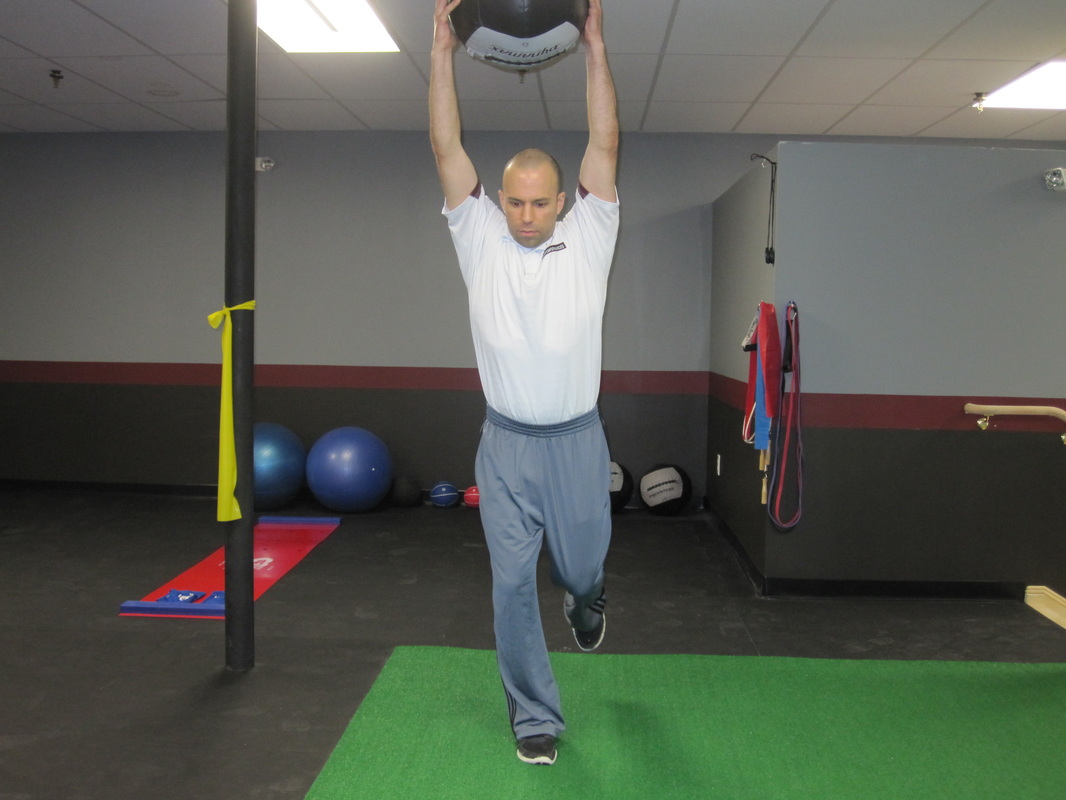

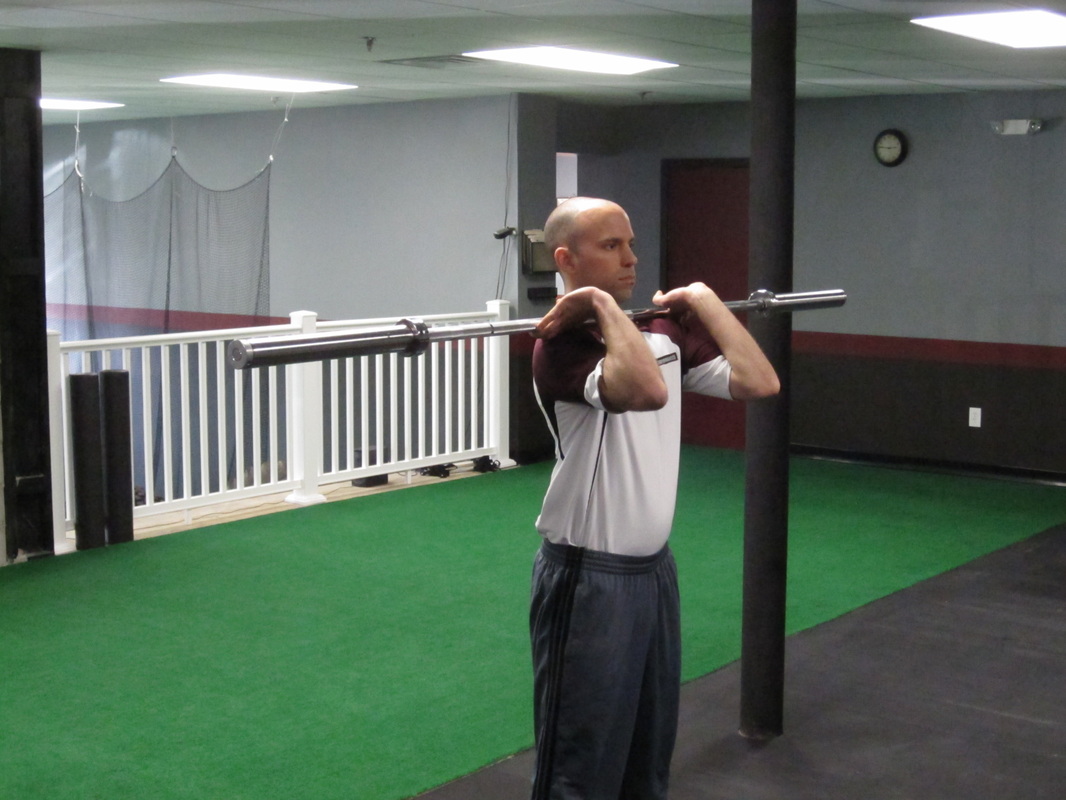

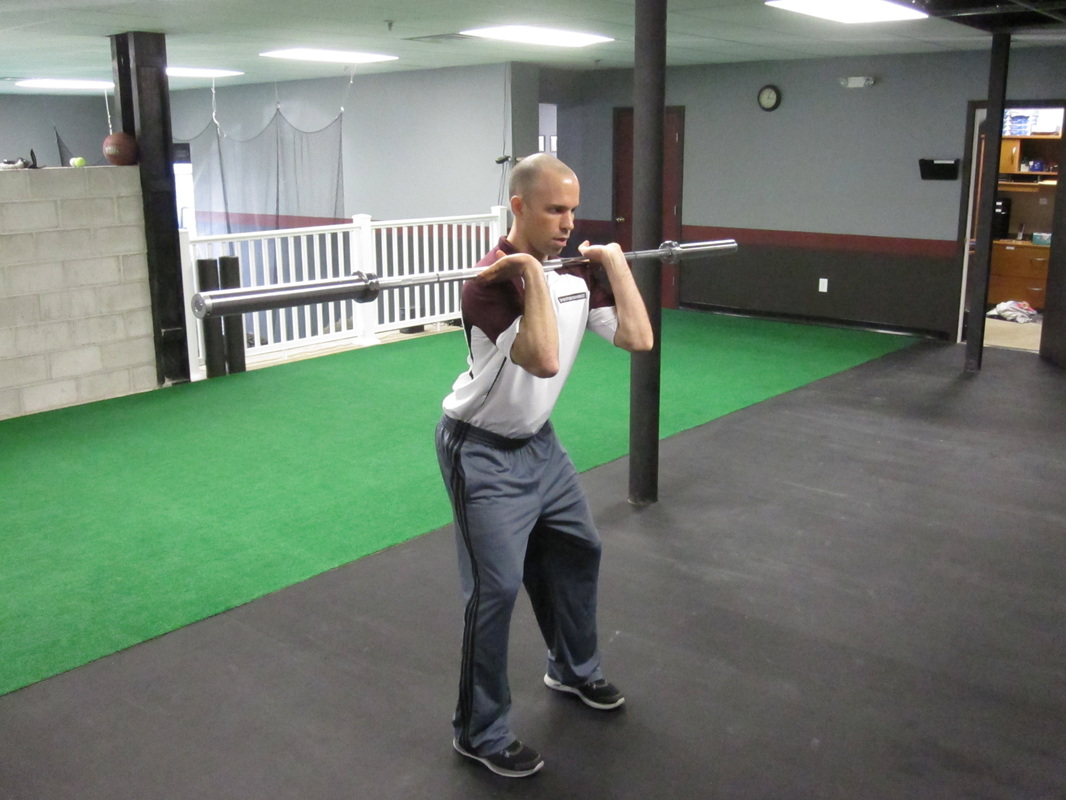
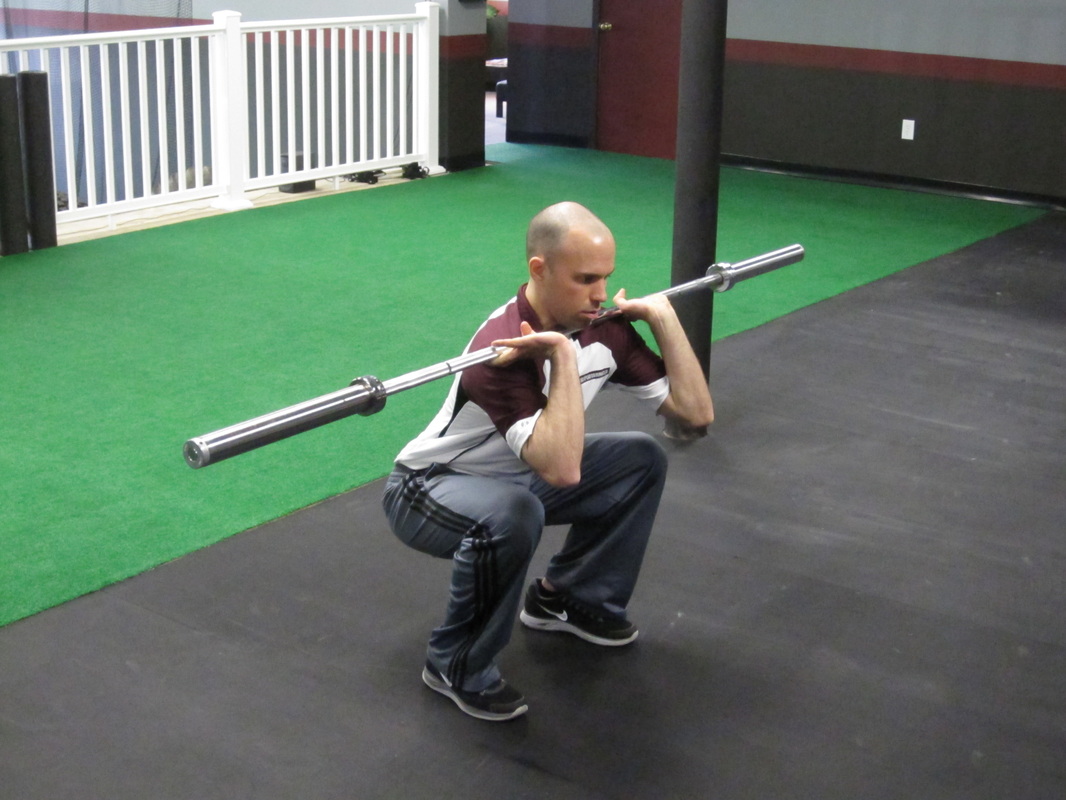
 RSS Feed
RSS Feed